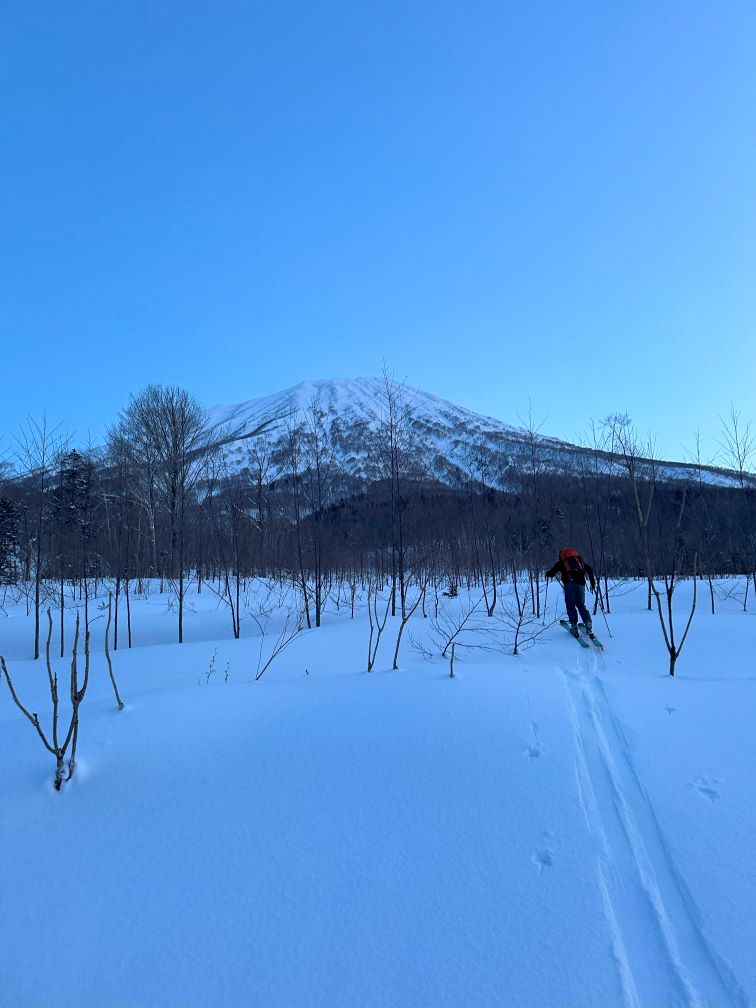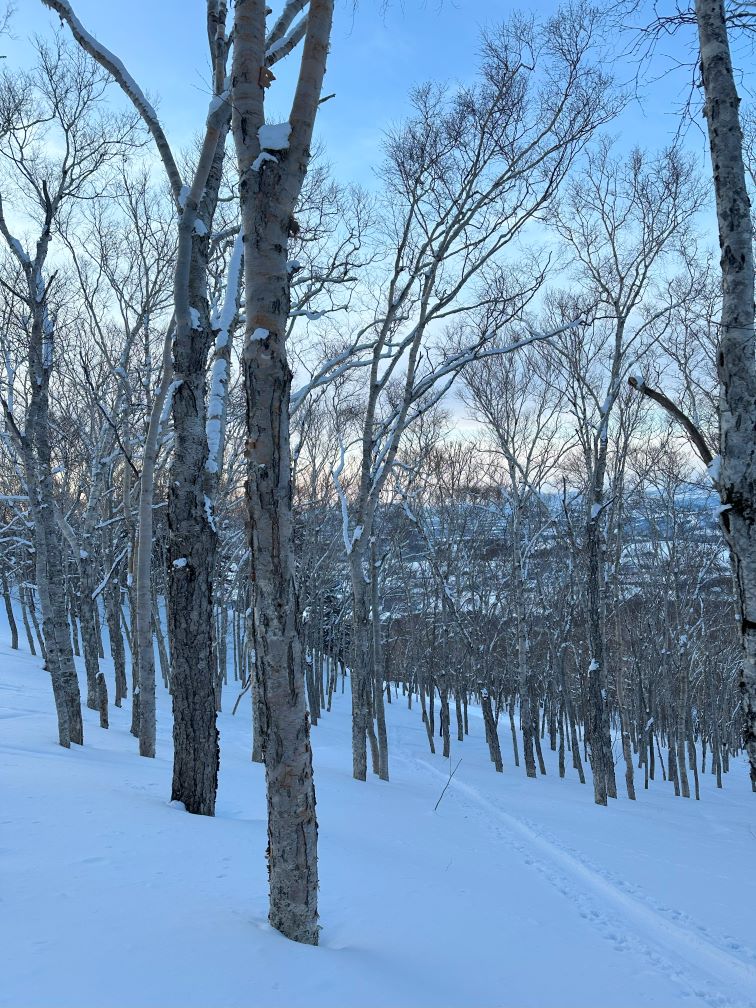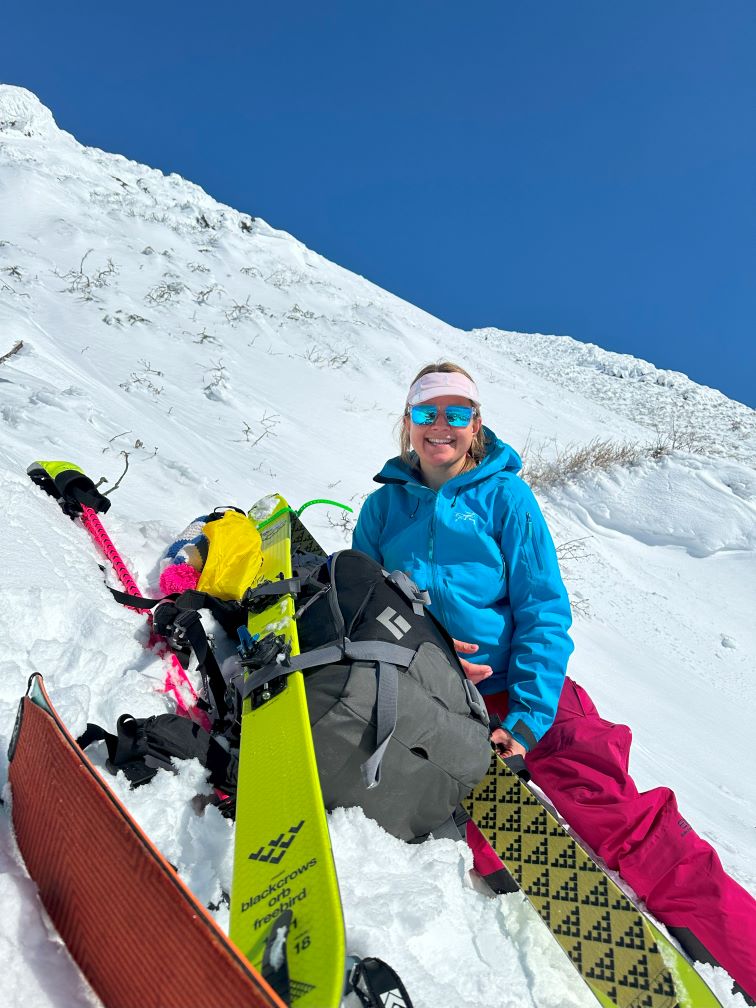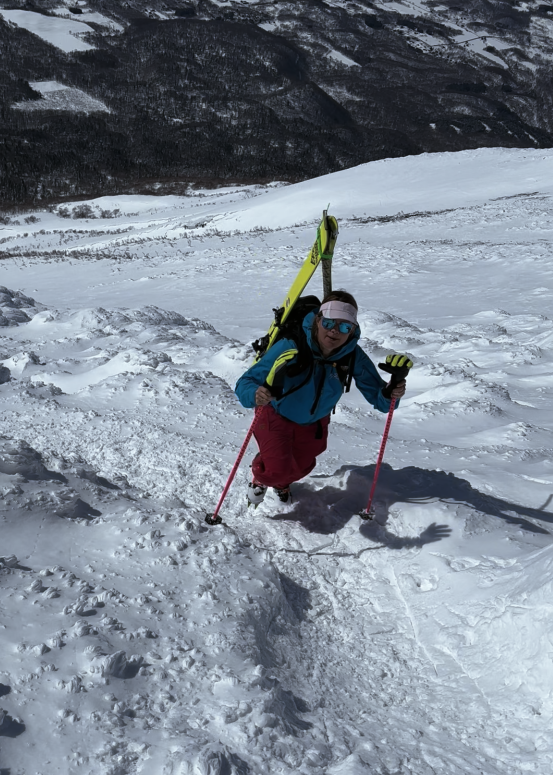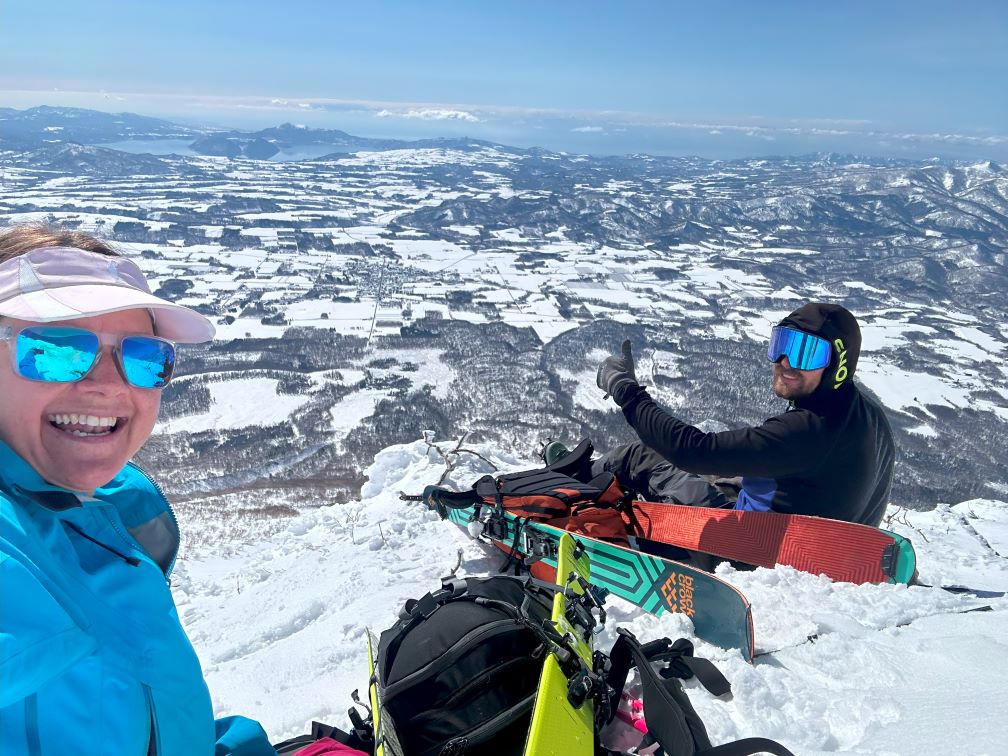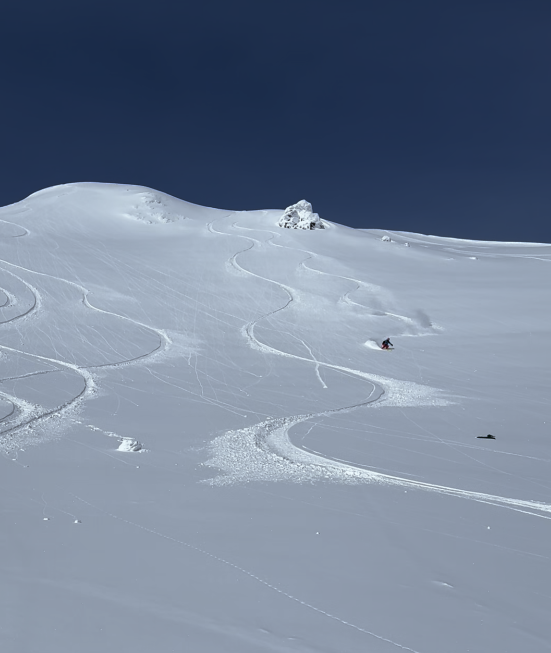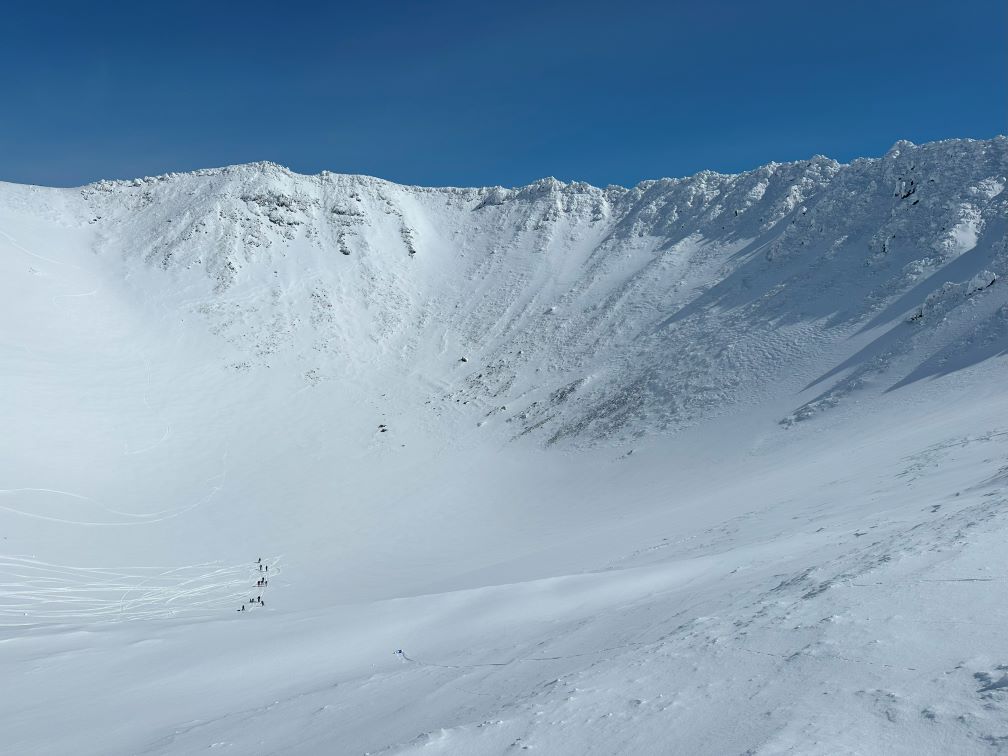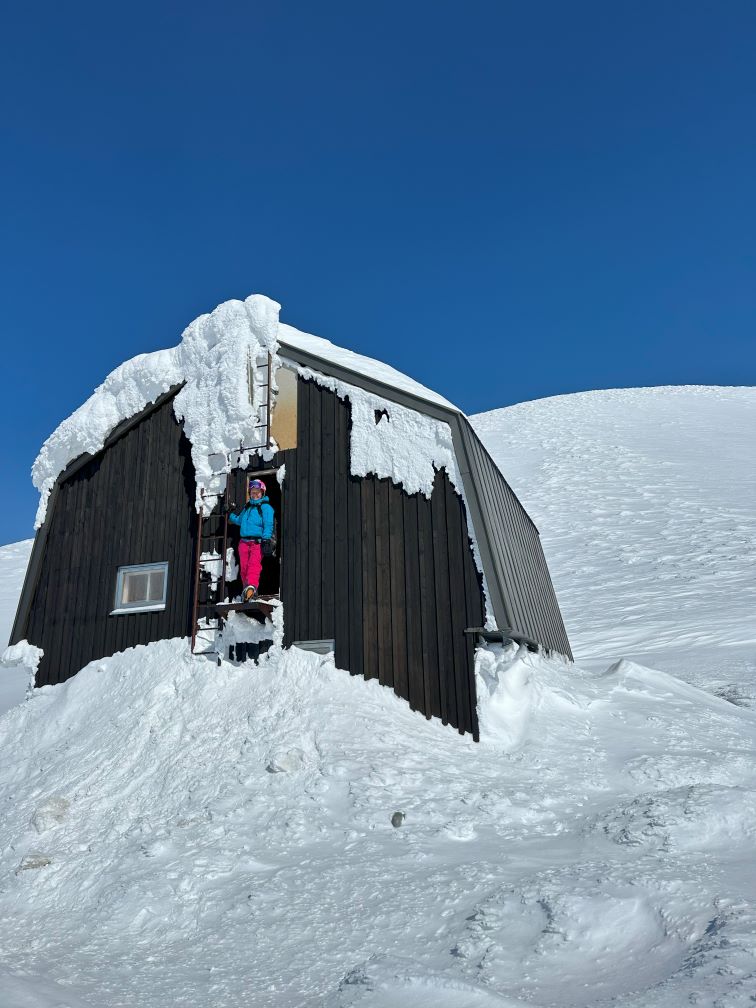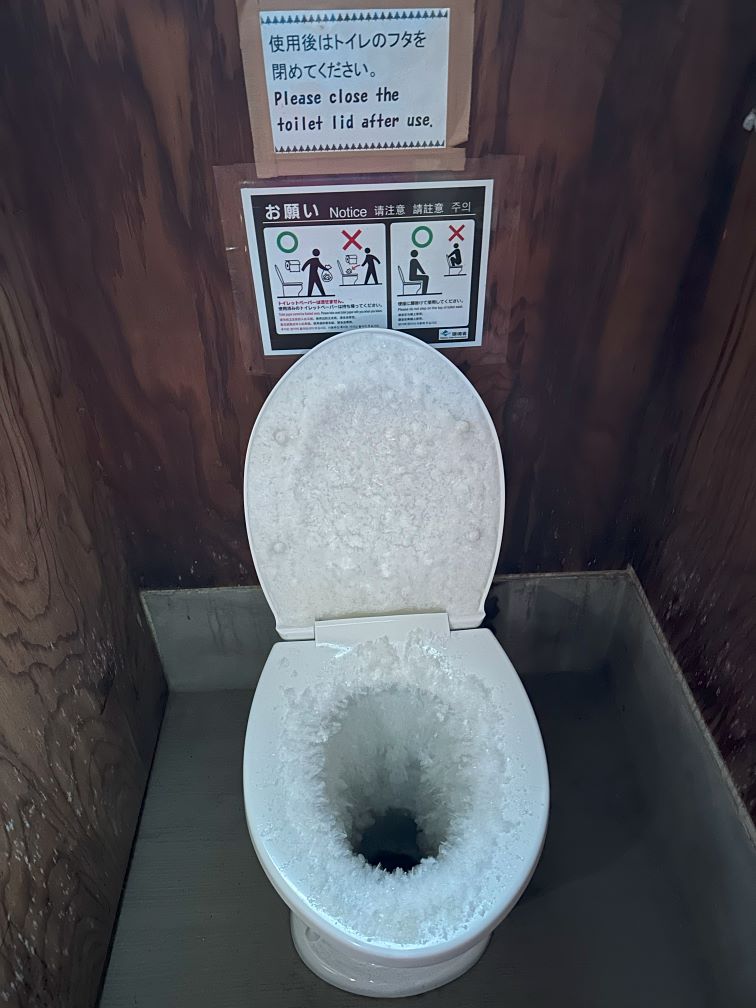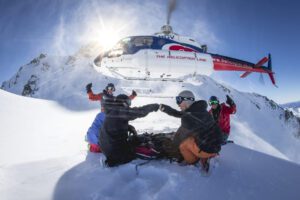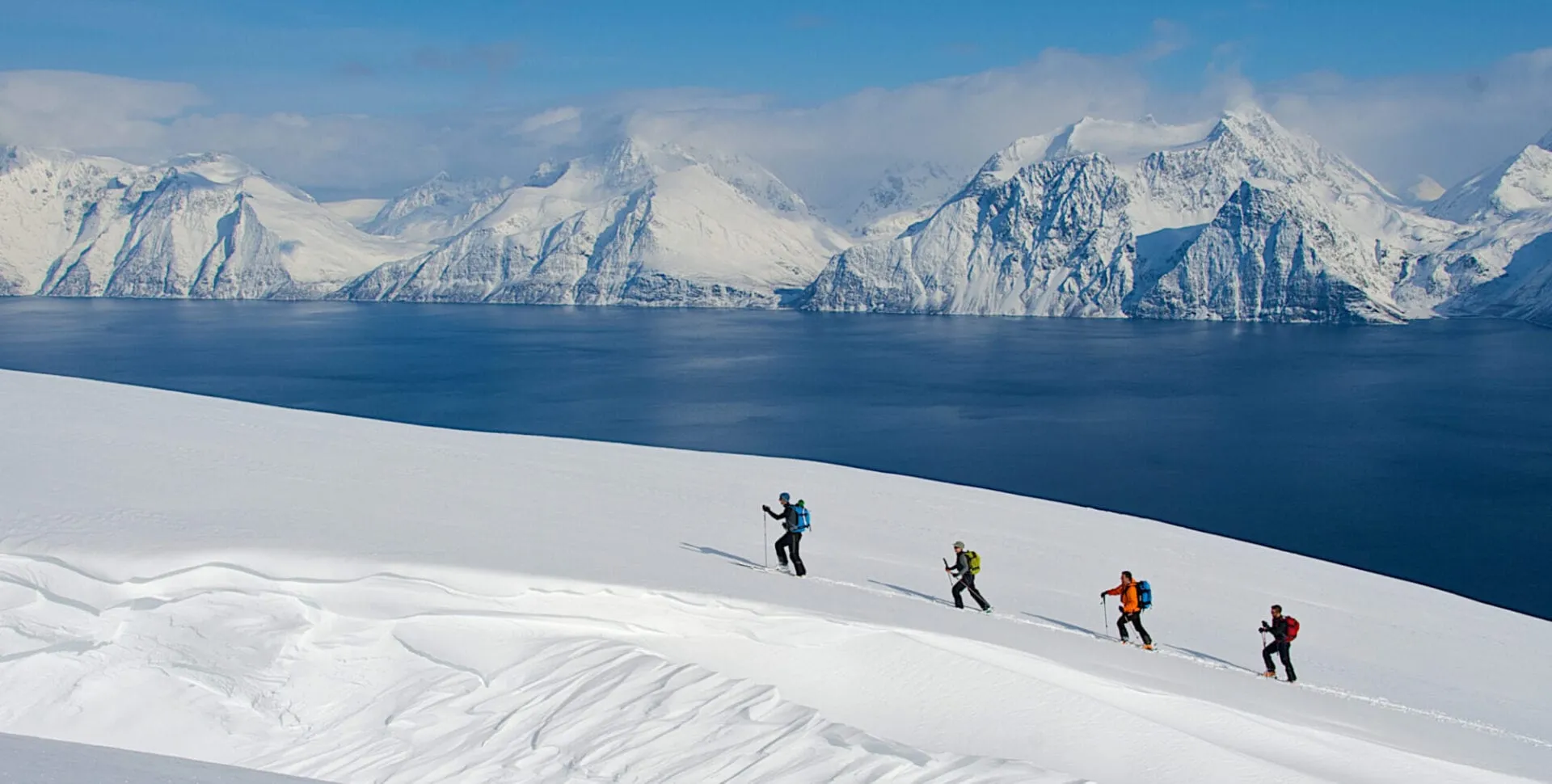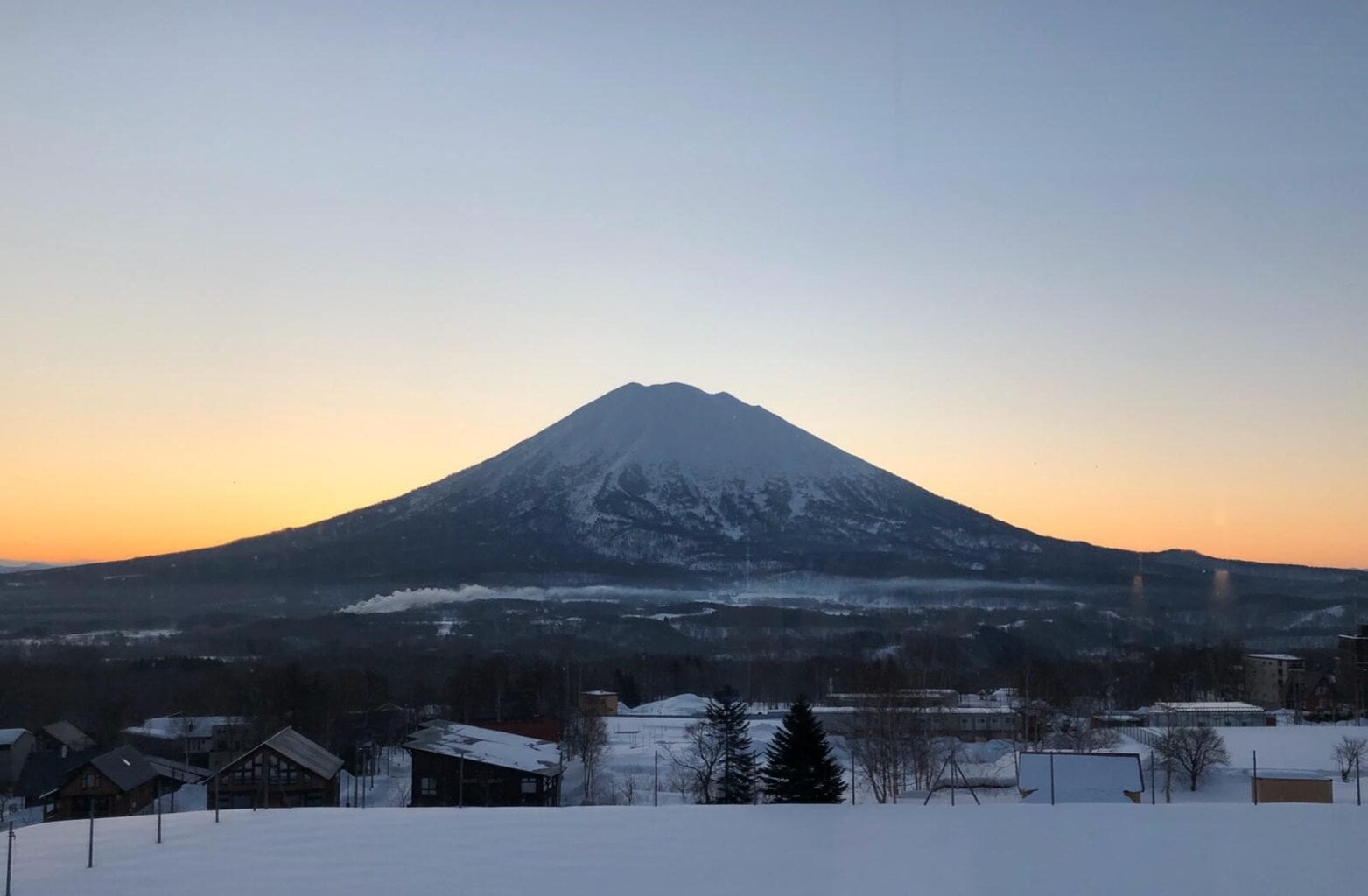
Climbing Mount Yotei
We began our ascent at 5:15am outside the small town of Makkari, just to the south of the volcano. With a starting altitude of just over 200m above sea level, the task ahead became clear: a daunting 1600m uphill climb on touring skis. For those who haven’t ski toured before this involves sticking skins to the bottom of your skis to enable you to glide forwards, but not slip backwards as you make your way uphill.
My guide, Sam, told me he expected it would take us between 6 and 7 hours of climbing. I was pleased to be starting so early, as I realised that I had never actually climbed this much in one day on skis. As the dawn approached, casting an orange glow over the landscape, the silhouette of Yotei loomed larger, fuelling both excitement and a bit of trepidation. We embarked on our ascent at a steady pace, starting on a gentle uphill through the infamous Japanese Silver Birch trees and gradually leaving these behind to confront the steeper sides of the volcano where more precise kick turns were required.
Confidence in my Abilities
It must be hard being a backcountry guide, focussing your efforts on getting clients to the top of something before having any real idea whether they are actually capable of skiing back down again. When you book a guide, you give a gauge of your ski ability, but everyone’s perception of this is slightly different and often more closely linked to confidence than actual ability.
The conditions were potentially tricky for our ski down with a hard punch crust over soft snow beneath. Sam quizzed me on my ski ability – Was I happy on 35+ degree slopes? Would I be able to ski through the punch crust? Could I do a downhill kick turn? I know I’m a pretty competent skier and can get down most things, but I wasn’t answering any of his questions with certainty and he’d never seen me ski before. He then suggested we take our skins off and ski down a little way now to test my skiing. The idea of transitioning and then losing our altitude by heading downhill at this point did not appeal, and this was when I realised the need for greater confidence and to reassure him that I’d be fine! And so we pressed on with our climb.
Bootpacking to the Summit
Around 3.5 hours into the ascent, we were making good progress and had around 400m of vertical gain remaining. The terrain towards the summit becomes much steeper and kick turns were getting progressively more difficult. I eventually fell mid turn and was somewhat floundering on the snow with my skis facing different directions beneath me. The snow was quite deep which made manoeuvring to a position where I was able to stand again tricky, but I got there and eventually managed to stand up again. At this point Sam suggested it was time to put our skis on our back and bootpack the rest.
We took our skis off and carefully attached them to our rucksacks, and then put on boot crampons for the final ascent. It looked pretty much vertical ahead of me, but I was hopeful we would be up there in no time. However, it was much harder than it looked! The snow was pretty deep and soft and we made slow progress – much like walking up a steep sand dune. Every step felt like a small victory. I was getting increasingly nervous about whether I was actually going to get to the top, and also whether I was going to be able to ski back down!
Skiing Mount Yotei’s Crater
After nearly six hours, we navigated the last of the massive lumpy snow boulders which adorn the approach to the summit, and we were back on the flat, walking towards the lip that looked down into the crater. We had made it to the top, and I peered over the edge into Yotei’s incredible snow covered crater. What an amazing sight.
Pausing to catch our breath, we refuelled with some chocolate and water before removing our crampons, peeling off our skins and getting ourselves into long awaited ski mode. Sam had already eyed up our line down into the crater. There was one well tracked area, but to the left of some rocks there was untouched, virgin snow and this was where we would be skiing. Sam went first and I followed, gliding down through knee deep powder down into the crater. It was incredible.
Once in the crater, the stillness was magical. We were bathed in sunshine and surrounded by a snowclad walls on all sides, in the bottom of the large volcanic bowl. We had a bite of lunch before skinning up the 100m or so ascent out of the crater and transitioning once more to begin our ski back down.
The Ski Back Down
Apart from a quick stop to inspect the mountain hut a few hundred metres from the summit, (check out the photo of its loo!) we picked a line of pretty much fresh snow from top to bottom. I always say that I love ski touring for the uphill more than the downhill, but I think that’s because I’ve only really ski toured in Europe, where the snow tends to be fairly cruddy and icy. Ski touring in Japan is a different story, and this downhill was a ski I will remember forever – light and powdery, fresh tracks, blue skies, incredible views out to the sea of Japan, and total serenity – just us and the mountain. It was steep, fast and fun, and finished off with a ski out through the infamous Japanese silver birch trees. Happy days indeed.
Advice for anyone considering a Yotei Climb:
- Book a guide – it is steep and avalanche prone terrain which should not be underestimated. Make sure to hire a local backcountry ski guide who knows the conditions and terrain to ensure your safety. Mabey Ski can organise this for you.
- Allow for 3 or 4 days – Yotei can only be attempted when conditions and visibility are good so it is worth ensuring some flexibility on the day you will attempt the climb.
- Training – the ascent involves 6-7 hours of climbing and requires a good level of fitness and stamina to get to the summit.
- Start early – this will ensure you have more time to make it to the summit, more likelihood of a better weather window, and also a lower avalanche risk.
- Ski ability – you need to be confident ski touring or split boarding up 30+ degree terrain, and skiing back down this.
- Bring your own touring boots – you can rent touring skis (frame bindings) locally, but there are few options to rent touring boots
If you’re interested in attempting to climb Mount Yotei or other backcountry adventures in Japan, please get in touch with our team to discuss.

